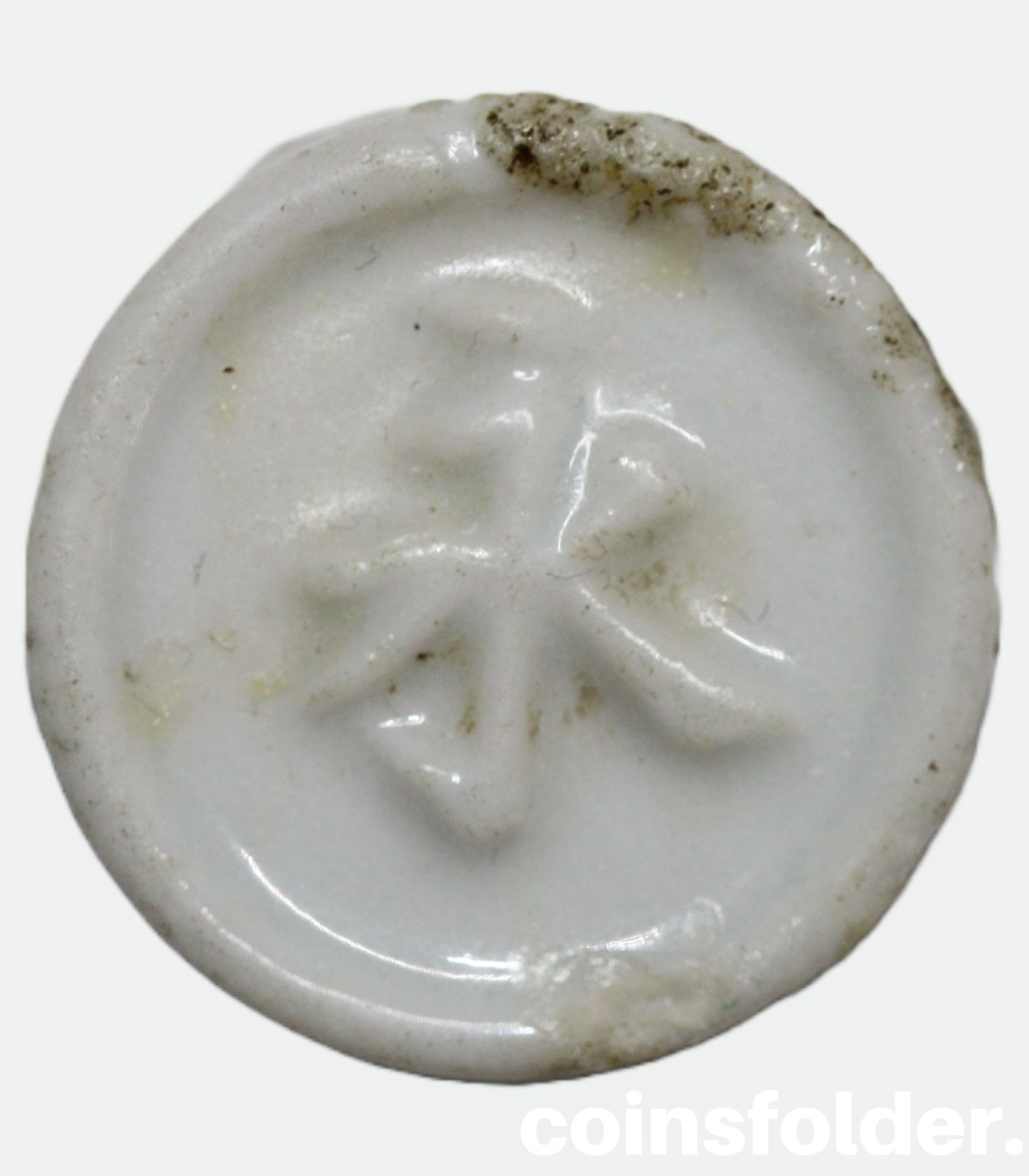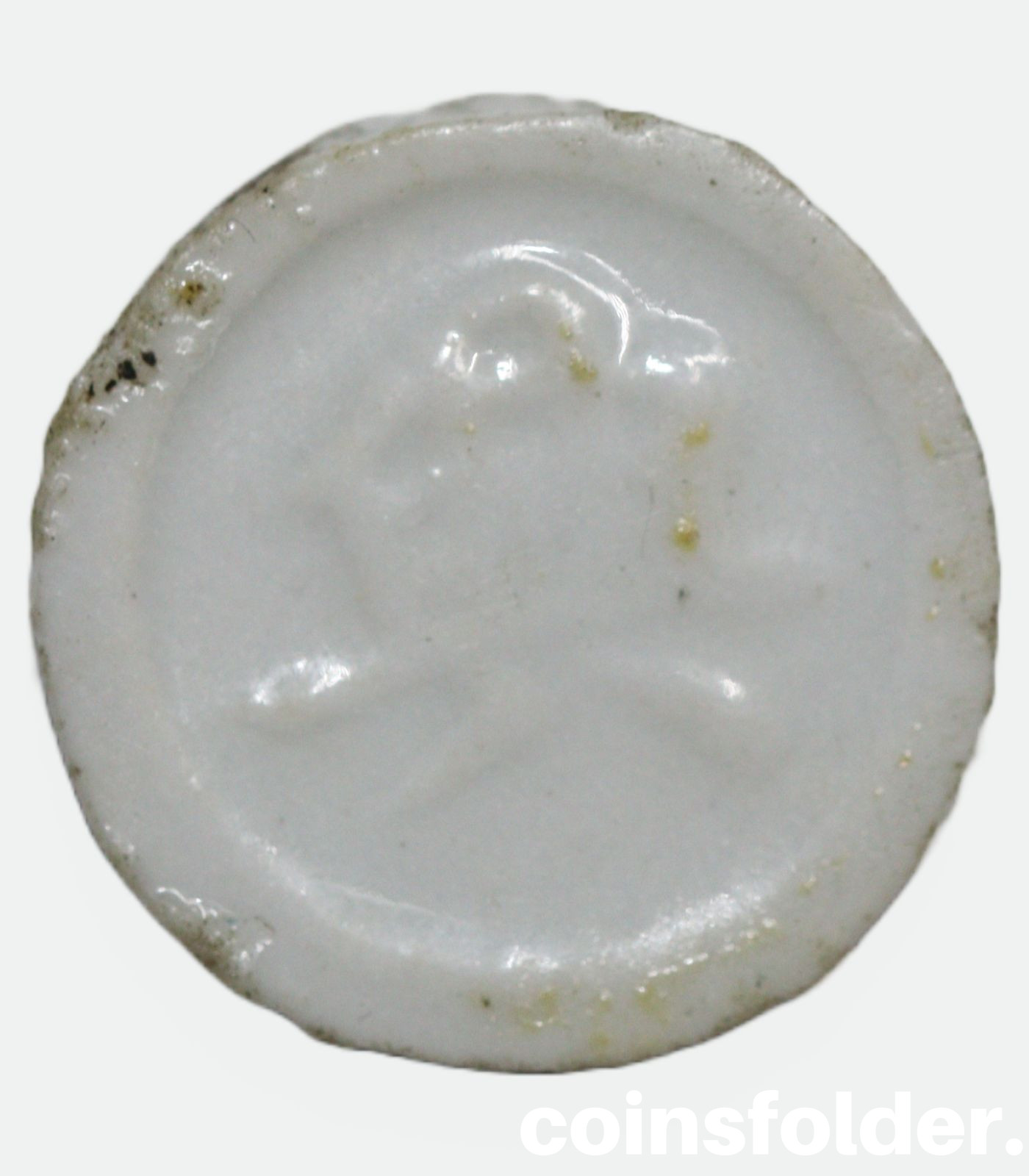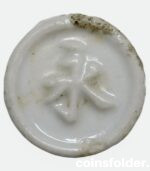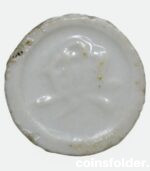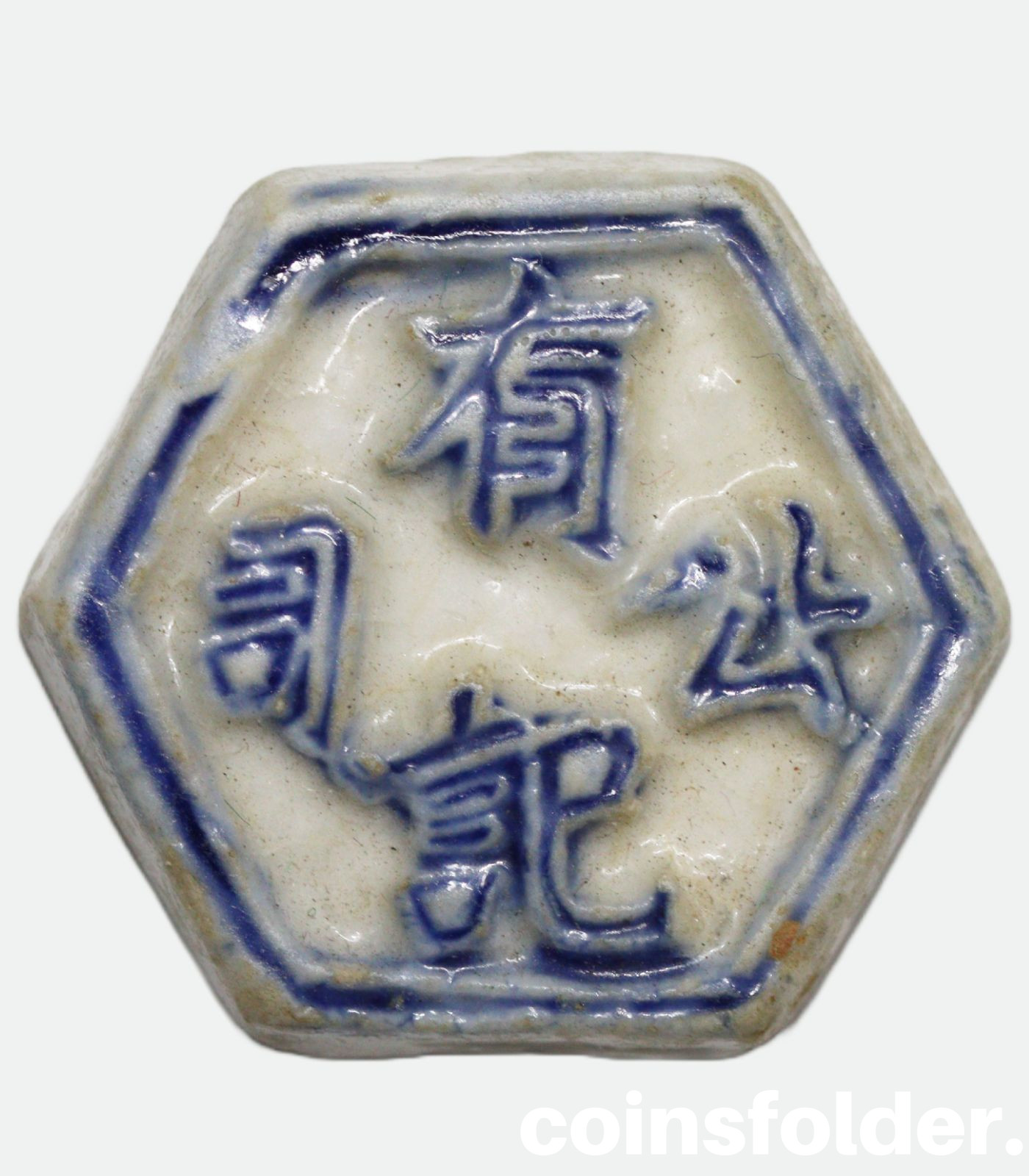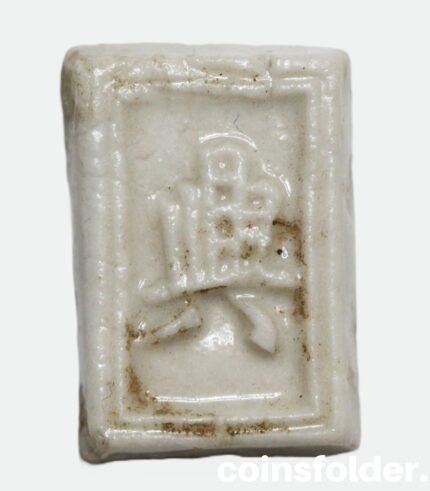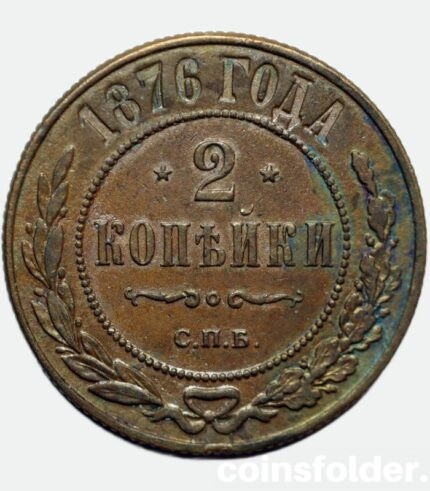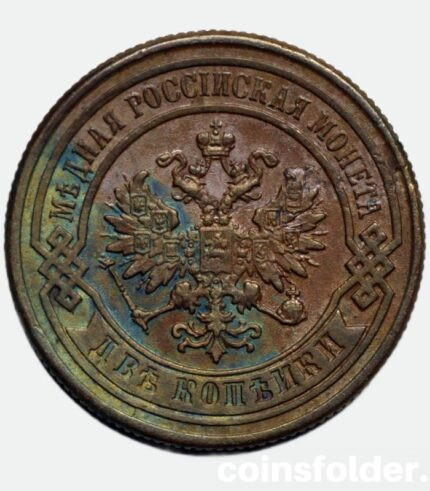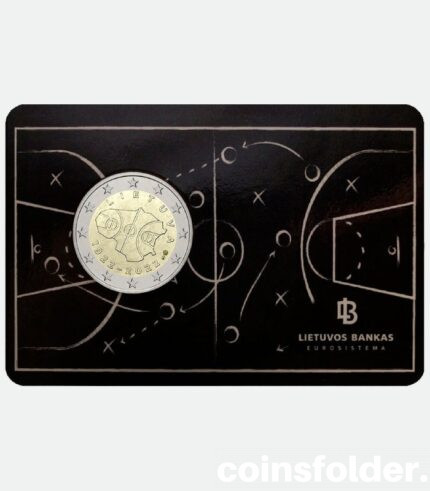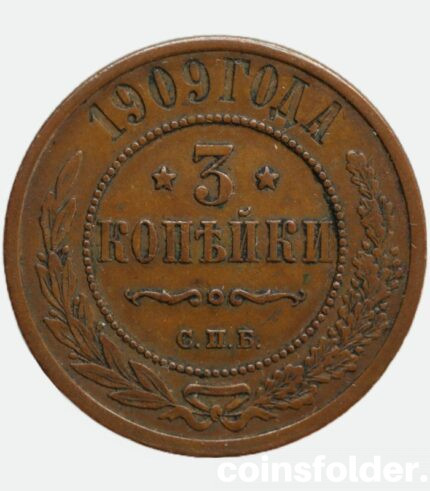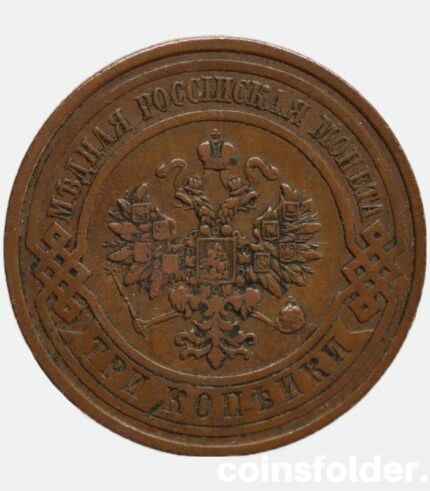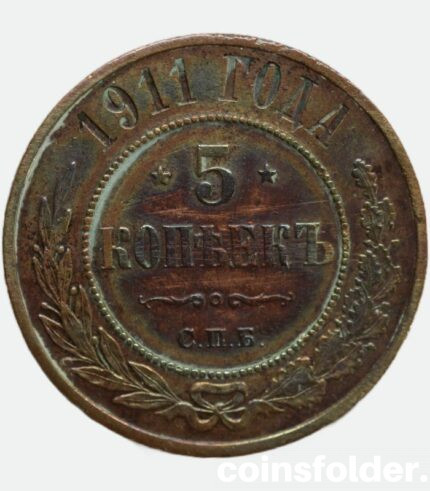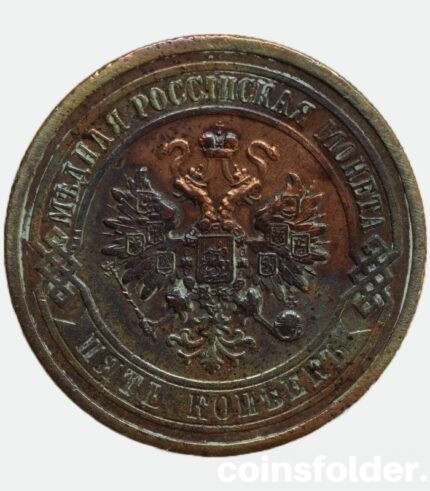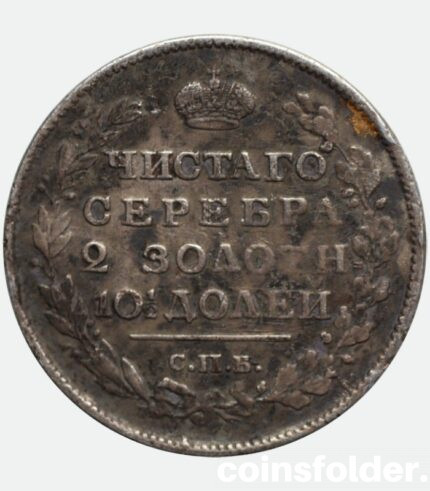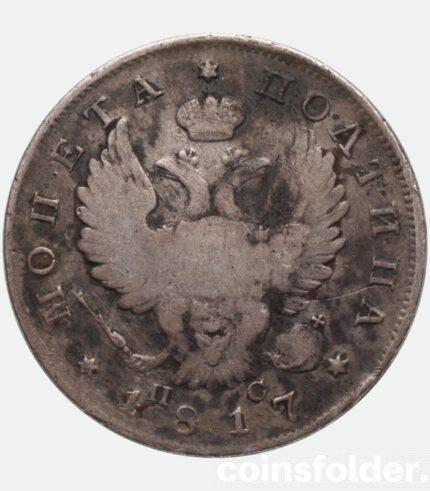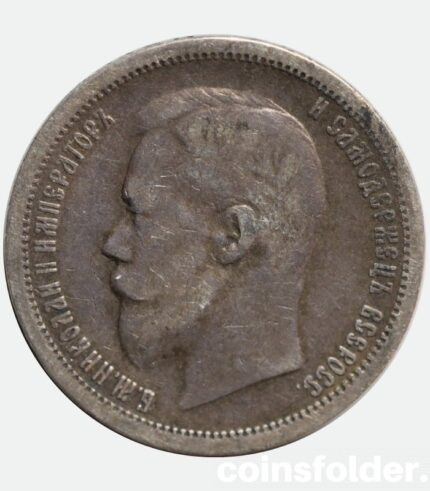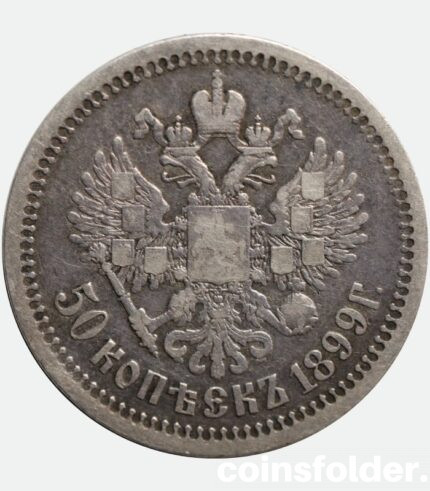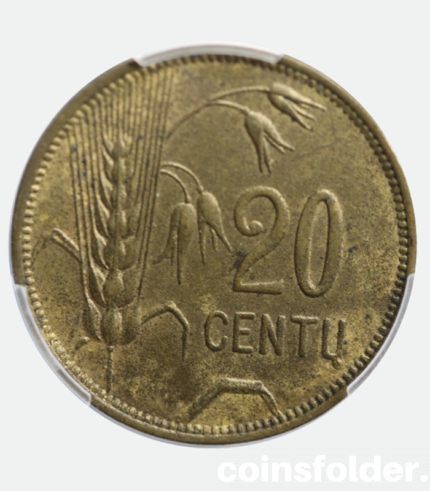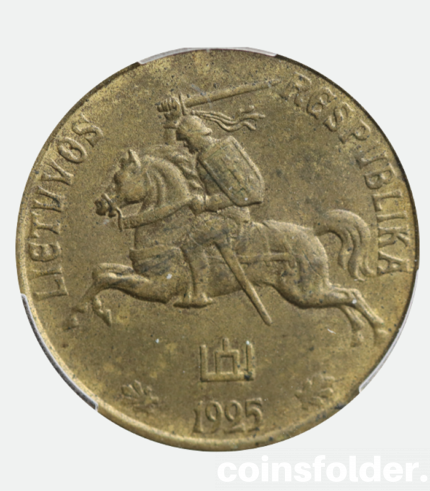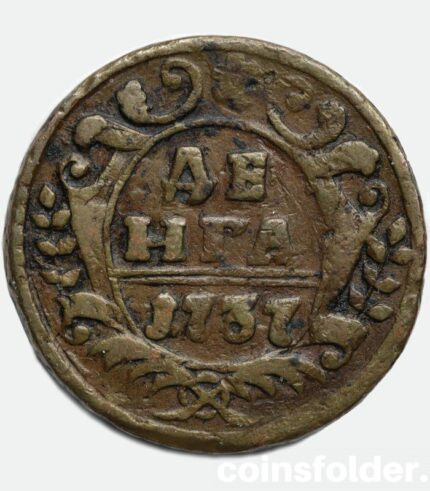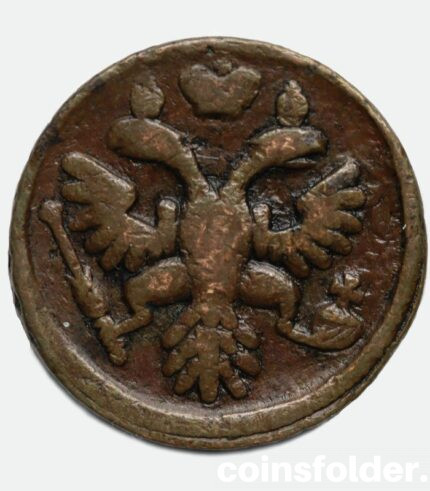This authentic 1760–1875 Siam porcelain gambling token, known locally as a “Pee,” represents a fascinating period in Thai-Chinese cultural and economic history. These porcelain tokens were originally used as counters in the Chinese game Fantan, which was widely played in Chinese-run gambling houses known as hongs across old Siam (now Thailand).
Over time, these tokens became a practical replacement for the heavy silver bars used as currency, especially within the hong owners’ local economies. This round-shaped example is made of glazed white porcelain, featuring embossed Chinese characters on each side—typical of personalized house-issued currency.
While official coins were eventually introduced and the use of these pees was outlawed, many remained in circulation underground well into the 20th century. It is believed that thousands of unique designs existed, with various shapes, symbols, and inscriptions reflecting the issuing hong’s identity or location.
These tokens also served as a means of economic control and profit, as the gambling houses would periodically recall and devalue old issues. Today, they are treasured as collectible artifacts of pre-modern Southeast Asian commerce, Chinese diaspora trade culture, and antique gaming memorabilia.
Perfect for collectors of:
Siamese/Thai currency history
Asian porcelain tokens
Gambling collectibles
18th–19th century trade artifacts

 Art
Art Asian
Asian Banknotes
Banknotes Numismatics
Numismatics Porcelain
Porcelain Buttons
Buttons Jewelry
Jewelry Silverware
Silverware Ceramics
Ceramics Militaria
Militaria Books
Books Glassware
Glassware Leatherware
Leatherware Philately
Philately Other antique
Other antique Gifts
Gifts Accessories & Services
Accessories & Services